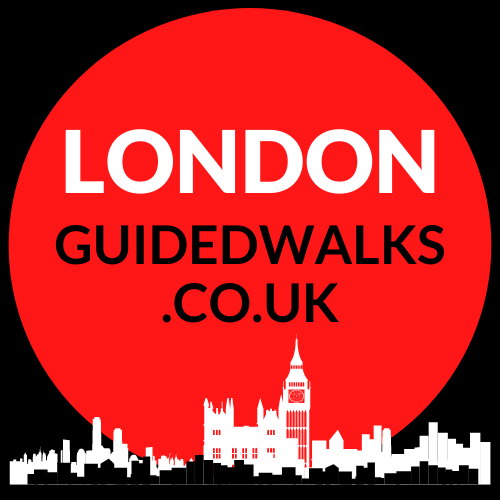
Episode 24: The Walbrook in Roman London
The river Walbrook is the shortest but one of the most important of London's lost rivers. This Roman London water source is now entirely hidden and has largely been forgotten.
Join London tour guides Hazel Baker and Ian McDiarmid as they take you back to Londinium, when the Walbrook was more than a street name.
Listen Now: Apple Podcasts | Spotify |Android | RSS
Get our latest episode in your inbox here
Book a private tour with Ian McDiarmid
Related Podcast

Support us on Patreon from as little as £5.
Gain access to exclusive content including behind the scenes videos, full transcripts, shout outs and mini videotours!
Show notes:
Hazel: Hello and welcome to our London History Podcast, where we share our love of London, its people, places, and history in 20-minute espresso shot episodes served with a dash of personality. I am Hazel Baker, London tour guide and CEO of London Guided Walks, providing private tours, treasure hunts, and live online quizzes to Londoners and visitors alike.
To accompany this podcast, we also have hundreds of London history related blog posts for you to enjoy, all absolutely free. We've also launched The Daily London, providing you with daily inspiration of things to do in London, for Londoners. You can listen on iTunes, Spotify, or even add it to your Alexa flash briefings. And you can check all of that out on our website, londonguidedwalks.co.uk/flash.
What we discussed:
Hazel: Today, we're going to be talking about the Walbrook stream in the city of London during Roman times. And to help me navigate this, is city of London tour guide, Ian McDiarmid.
The Walbrook stream began as Springs. In modern day, Islington and Shoreditch. And flowed through Central London, reaching the Thames by Cannon St. Station. Ian, to help those who aren't familiar with the Walbrook or indeed, the city of London, would you want to pinpoint the Walbrook a little bit closer?
Ian: Yes. Well, the first thing to say, obviously that it is, one of London's hidden rivers, so, it's been covered up for very long time now. In fact, by the end of the 15th century, it was getting incredibly narrow and was pretty much covered over for its entirety.
This is completely hidden, and this is one of those sort of fascinating, historical aspects to London when you can't really see anything of what you're talking about, but you're talking about something that was of immense importance.
Hazel, you've been interested in the Crossrail excavations. Could you explain where they were and what they found
Ian: One of the things I remember reading about the upper Walbrook is I think a bit before, when you're talking about is the exposure of bodies in the, rebates in the iron age, carrying on into the Roman age. And you mentioned that the stream is fairly fast flowing. In the lower Walbrook, they found a lot of skulls. And when these were found, it gave rise to some fanciful theories about battles, and weather or was it during the Boudican Revolt. And I think some people, modern scholars, someone's scholars maintain that they could be, people who were executed, during the Boudican Revolt.
But the more likely explanation is I think of the skulls being...of bodies being exposed in the river and the skulls perhaps being detached at the time of the bodies being laid down and then being carried down by the water to the lower Walbrook. Is there anything in that, or was it later and is it burial?
And what about the cemeteries? Is there anything of particular note that they found there? I think you were telling me that in Victorian times, horses didn't live very long, did they?
Hazel: No they didn't then they ended up as glue afterwards.
They also found a rare example of refined joinery from early Roman period.
Ian: And what about the Roman burials themselves?
Ian: So what animals did they find there then?
Hazel: Shall we move to the middle Walbrook then?
Ian: Yes. And, this really, we can begin to talk about why the Walbrook is so important.
Hazel: And there's several writing tablets found there, weren't there?
Hazel: I remember you mentioning that one on your Roman London tour as well, don't you?
And you've got the Walbrook right in the middle of that. So what happened with that?
Hazel: That's all we've got time for now. Don't forget, Ian does provide a Roman London tour for you to get your teeth stuck into Roman London a little bit more. Many thanks to Andy who has suggested a rock and roll London podcast. We will put that one on the list and thank you to all of our listeners for your continued support, including Anne in Romford.
If you have time then leave us a review and don't forget to check out The Daily London, giving you daily inspiration for things to do in London.
Other Episodes
046 Beer, The Bard & Historic Buildings of Bankside
045 Drawing London's Buildings
042 John Julius Angerstein: The Man Behind the National Gallery
041 London's Medieval Friaries
040 Charles Dickens in Greenwich
038 The Black Death: London's First Plague
037 Bridgerton & Regency London
034 London's Old Shops - Food & Drink
031 Abandoned London Underground Stations
030 Quirky Street Names - Little Britain
029 The Harp maker of Fitzrovia
024 The Walbrook in Roman London
021 London Area Names - Animal Edition
020 The Great Fire of London - How It Began
017 The Proms & The Royal Albert Hall
016 Women in 1920s London (From Cowgirl to Congress)
014 Postcards From London's Past
013 London Statues: Medical Women
012 The Old Operating Theatre Museum
011 London's Coffeehouses and Commerce
009 Music Halls and Cabaret - from yesterday to today
008 The Monument to the Great Fire of London
006 Hockley in the Hole Clerkenwell
Some links contain affiliate links, which means that if you click on one of the product links, we receive a small commission. This helps support our free podcast. Thank you for the support!
Copyright London Guided Walks and Treasure Hunts
